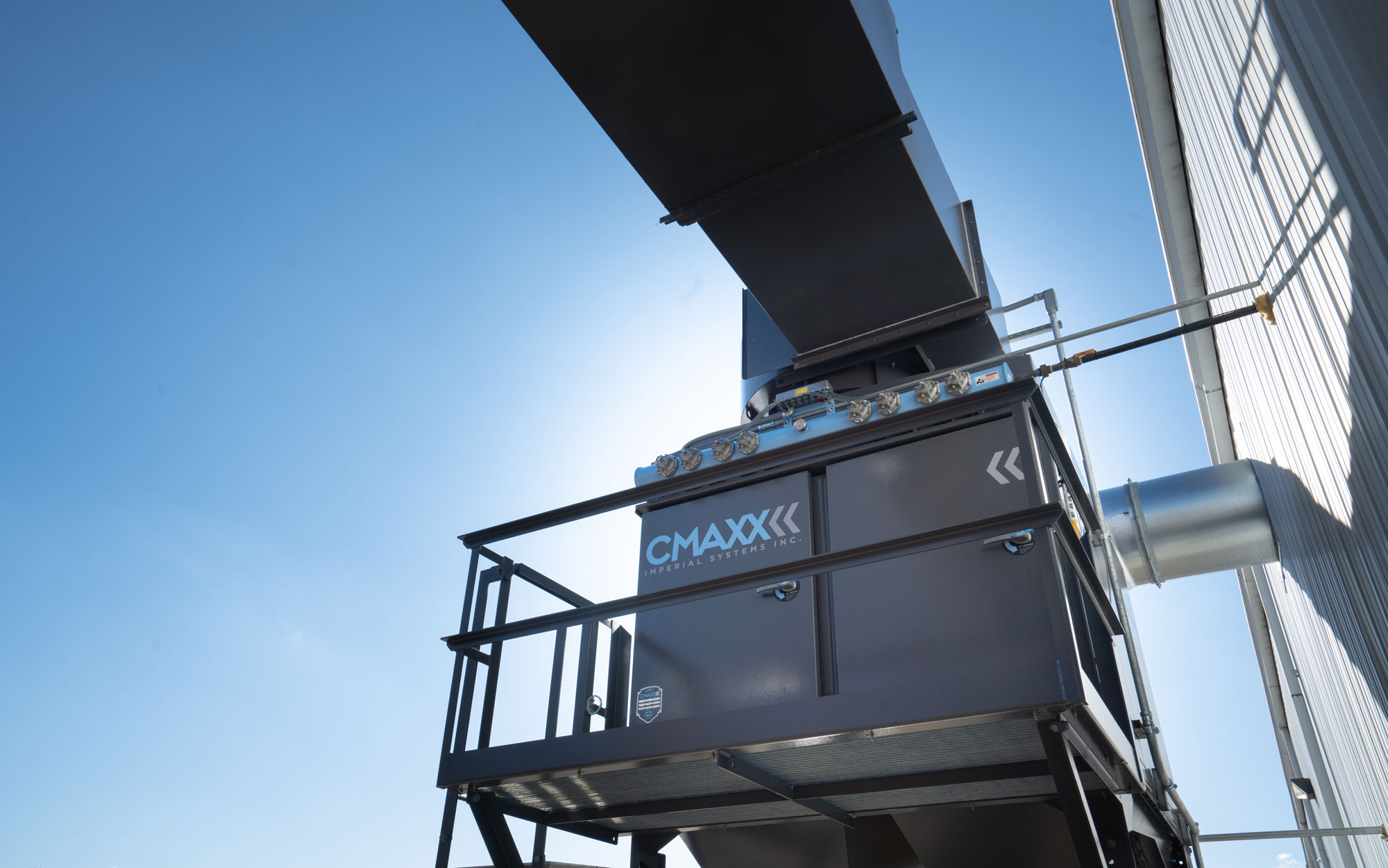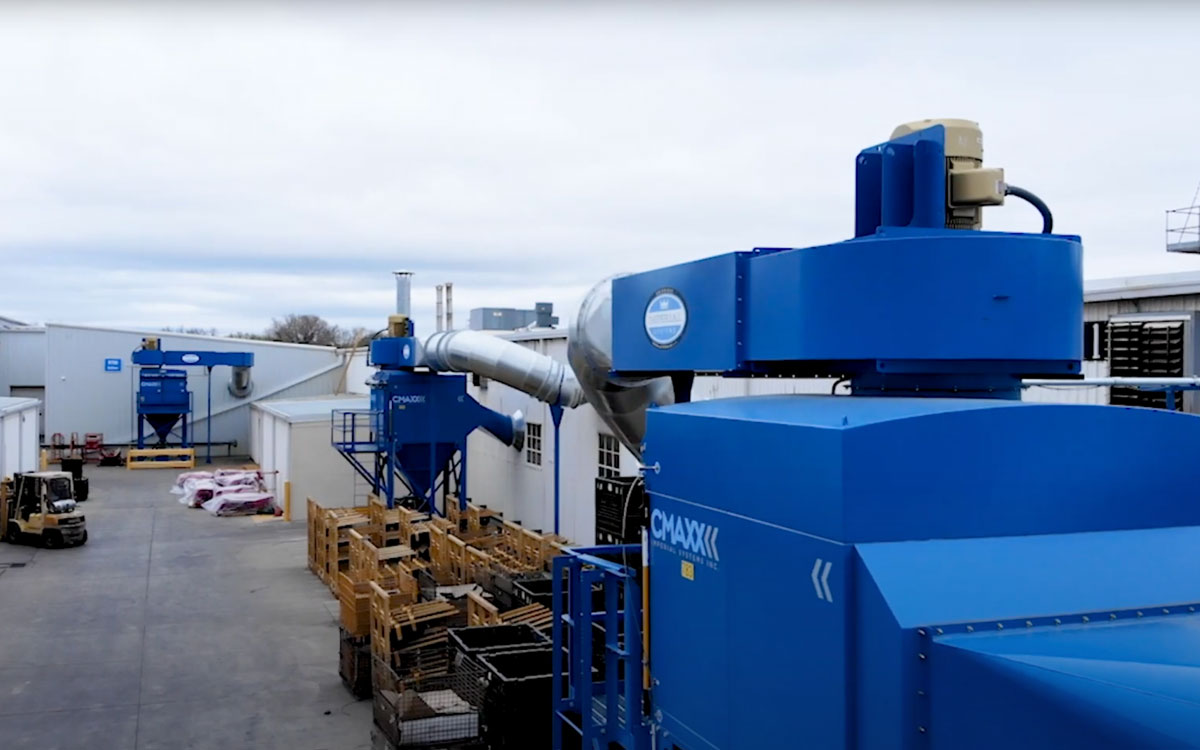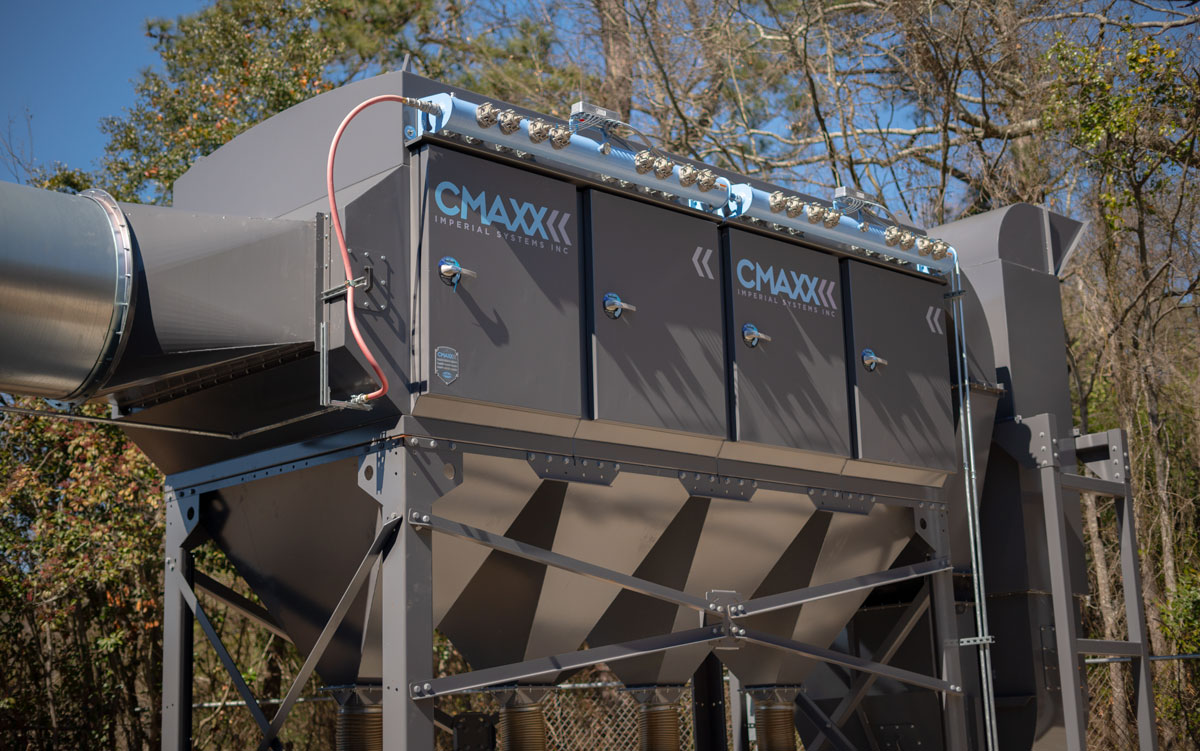Horizontal dust collectors are popular. They can fit a lot of filters into a fairly small footprint. Manufacturers will tell you that they work better. In reality, horizontal filters and dust collectors have some serious design issues. Donaldson Torit may be one of the biggest names in dust collection. But there are some serious flaws in their collectors. As many owners have found out, it’s a design prone to failure.
Filters in Horizontal Dust Collectors
Donaldson knows well that there’s a major problem with having horizontal filters on top of each other in a collector. They’ve tried everything, from suggesting you rotate the horizontal filters to designing new and weird filter shapes. But they can’t get around one basic problem. It’s the fact that dust that pulses off a filter will land on the filter underneath it. With each compressed air pulse, a shower of dust falls directly down on the next layer of filters.
This problem blinds off a large part of the horizontal filter. To try to decrease the area that blinds, Donaldson has produced oval and now triangle-shaped cartridges with less surface area facing upwards. This still doesn’t solve the basic design problem. It doesn’t make sense to filter dust just to drop piles of dust on top of your filters.
Filters in a horizontal collector cannot work at full efficiency because dust from the layer above them is always partially covering them. Some horizontal collector manufacturers recommend you rotate their filters to keep the side that’s facing up from blinding… but do you want to get into your collector and rotate dust-covered filters on a regular basis?
Yokes and Gaskets
In a horizontal dust collector, metal yokes support the filters. These yokes bolt to the tube sheet on one end. As you put the filters on the yoke, the first one presses back against the tube sheet. The last filter to go in presses against the door when it closes.
There are several places for this arrangement to go wrong.
- The yokes can easily bend while putting filters on or taking them off
- Yokes can pull away from the tube sheet, causing the gasket to leak
- Weight on the yokes can pull on and warp the tube sheet itself, causing more leaks
- The gasket sealing the filter to the door can fail if the yoke is bent
- The gaskets on the door and tube sheet ends, as well as the ones between the filters, provide multiple points of failure and leaks
Doors and Access
If you look at a horizontal dust collector, the first thing you’ll see is an array of doors. They’re usually round, only a little wider than the horizontal filter that goes in them. There are usually many of them as well.
Changing filters, or accessing anything inside the collector, means trying to work through these small round doors. Filters must be pulled off the yoke, and the ones in the back are difficult to reach. There isn’t that much room to reach in or access anything through these small doors.
Comparing a horizontal and a vertical collector, it’s easy to see how all of those small, round doors are a serious design problem. A vertical collector will usually have either one or two doors. When these doors are open, they give access to the entire space inside the collector.
With the doors of a vertical collector open, you can clearly see down into the hopper, and it’s easy to inspect for problems such as bridging. With the small round doors, it’s nearly impossible to see down into the hopper.
Clean Air Plenum Access
Because of the design of a Donaldson collector, there is no direct access to the clean air plenum. There are several reasons this can be a serious problem:
- You can’t reach a leak occurring on the clean air side for repairs
- No way to do routine maintenance or checks in this space
- If a leak lets dust into the clean air plenum, there is no way to access it for cleaning
If one of the yokes gets bent, or for some other reason a gasket seal on the tube sheet fails, dust will get into the clean air plenum.
On a vertical collector like the CMAXX, it’s easy to open the doors, access the clean air plenum, and get rid of the dust.
In a Donaldson or other horizontal dust collector, accessing the clean air plenum often requires a crane to remove ductwork so you can get in and cut an access panel.
If you can’t do that, the dust in the clean air plenum will continue to get blown back into your facility over time. If it’s a health or fire hazard, this is a major issue.
What are the Advantages of Horizontal Dust Collectors?
The major advantage of a horizontal dust collector is the ability to stack filters on top of each other. This can save floor space by making the collector taller instead of wider. This is one of the major selling points of Donaldson Torit and other horizontal collectors.
Besides size, the other advantages usually listed are higher efficiency and less maintenance. These vague statements don’t really tell you much: the horizontal filters in a horizontal collector lose efficiency more quickly than in a vertical one because the tops of the filters blind off.
Also, anyone who has ever dealt with the many gaskets, easily damaged yokes, and tiny access doors might argue about the “less maintenance”. There is less to maintain on a horizontal dust collector because you cannot access most of the collector to do maintenance on it. If you do need to do maintenance or troubleshooting on the hopper or clean air plenum, you won’t have an easy time doing it.
Choosing the CMAXX
A vertical collector like the CMAXX has none of the design flaws of Donaldson Torit and similar collectors. The single gasket where the filter meets the tube sheet greatly decreases the number of places you can get a leak. The clean air plenum and hopper are easy to access.
Everything in a vertical collector is easy to access: with a large door that opens to let you reach all the filters at once, you can easily get to every part of the collector. Filters are supported by sturdy lift rails that hold the filters securely against the tube sheet.
Because the filters in a CMAXX are not stacked on top of each other, dust that is pulsed off drops straight down into the hopper, instead of landing on other filters. The filters maintain a higher efficiency over time.
With all the advantages of a CMAXX, it seems clear that it’s a better choice. The people who may appreciate it the most are the people who have to maintain the system. After all, if you’re trying to fix a problem, you’d probably rather do it through one wide-open access door than through a whole bunch of little round doors not much wider than a filter.


